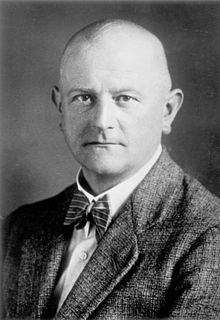Ludwig Müller

Johan Heinrich Ludwig Müller (23 June 1883 – 31 July 1945) was a German
Life
Müller was born in
After the war, Müller joined
Müller had little real political experience and, as his actions would demonstrate to

As part of the
Müller's advancement angered many Protestant pastors and congregations, who deemed his selection to be politically motivated and intrinsically
Many of the German Protestant clergy supported the Confessing Church movement, which resisted the imposition of the state into Church affairs.[6] With Hitler's interest in the group having waned by 1937, and the party taking a more aggressive attitude toward the resistant Christian clergy, Müller tried to revive his support by allowing the Gestapo to monitor churches and consolidating Christian youth groups with the Hitler Youth.
He remained committed to Nazism to the end. He committed suicide[citation needed] in Berlin in 1945, soon after the Nazi defeat.
Notes
- ISBN 9781441137470.
- ^ Barnett p. 33.
- ^ Shirer p. 235
- ^ See article on Confessing Church for the background of the Protestant Church in Germany.
- ^ Lilla 2005, p. 224.
- ISBN 0-415-22213-3.
References
- Barnes, Kenneth C. (1991). Nazism, Liberalism, & Christianity: Protestant social thought in Germany & Great Britain, 1925-1937. University Press of Kentucky. ISBN 0-8131-1729-1. (Barnes)
- Barnett, Victoria (1992). For the Soul of the People: Protestant Protest Against Hitler. Oxford University Press US. ISBN 0-19-512118-X. (Barnett)
- Hockenos, Matthew D. (2004). A Church Divided: German Protestants Confront the Nazi Past. Bloomington: Indiana University Press. ISBN 978-0-253-34448-9. (Hockenos)
- Lilla, Joachim (2005). Der Prußische Staatsrat 1921–1933: Ein biographisches Handbuch. Düsseldorf: Droste Verlag. ISBN 978-3-770-05271-4.
- Rev. Howard Chandler Robbins (1876–1952), The Germanisation of the New Testament by Bishop Ludwig Müller and Bishop Weidemann, London, 1938
